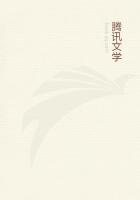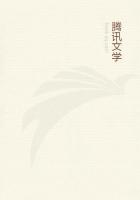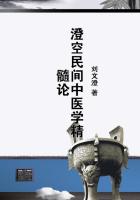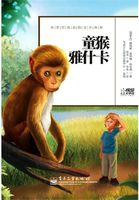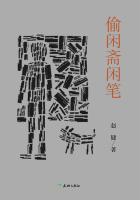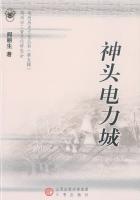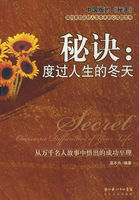Thistle family Evolution teaches us that thistles, daisies, sunflowers, asters, and all the triumphant horde of composites were once very different flowers from what we see today.Through ages of natural selection of the fittest among their ancestral types, having finally arrived at the most successful adaptation of their various parts to their surroundings in the whole floral kingdom, they are now overrunning the earth.Doubtless the aster's remote ancestors were simple green leaves around the vital organs, and depended upon the wind, as the grasses do - a most extravagant method - to transfer their pollen.Then some rudimentary flower changed its outer row of stamens into petals, which gradually took on color to attract insects and insure a more economical method of transfer.Gardeners today take advantage of a blossom's natural tendency to change stamens into petals when they wish to produce double flowers.As flowers and insects developed side by side, and there came to be a better and better understanding between them of each other's requirements, mutual adaptation followed.The flower that offered the best advertisement, as the composites do, by its showy rays; that secreted nectar in tubular flowers where no useless insect could pilfer it; that fastened its stamens to the inside wall of the tube where they must dust with pollen the underside of every insect, unwittingly cross-fertilizing the blossom as he crawled over it; that massed a great number of these tubular florets together where insects might readily discover them and feast with the least possible loss of time - this flower became the winner in life's race.
Small wonder that our June fields are white with daisies and the autumn landscape is glorified with goldenrod and asters!
Since North America boasts the greater part of the two hundred and fifty asters named by scientists, and as variations in many of our common species frequently occur, the tyro need expect no easy task in identifying every one he meets afield.However, the following are possible acquaintances to everyone:
In dry, shady places the LARGE or BROAD-LEAVED ASTER (A.
macrophyllus), so called from its three or four conspicuous, heart-shaped leaves on long petioles, in a clump next the ground, may be more easily identified by these than by the pale lavender or violet flower-heads of about sixteen rays each which crown its reddish angular stem in August and September.The disk turns reddish brown.
In prairie soil, especially about the edges of woods in western New York, southward and westward to Texas and Minnesota, the beautiful SKY-BLUE ASTER (A.azureus) blooms from August till after frost.Its slender, stiff, rough stem branches above to display the numerous bright blue flowers, whose ten to twenty rays measure only about a quarter of an inch in length.The upper leaves are reduced to small flat bracts; the next are linear; and the lower ones, which approach a heart shape, are rough on both sides, and may be five or six inches long.
Much more branched and bushy is the COMMON BLUE, BRANCHING, WOOD, or HEART-LEAVED ASTER (A.cordifolius), whose generous masses of small, pale lavender flower-heads look like a mist hanging from one to five feet above the earth in and about the woods and shady roadsides from September even to December in favored places.
The WAVY or VARIOUS-LEAVED ASTER or SMALL FLEABANE (A.undulatus)has a stiff, rough, hairy, widely branching stalk, whose thick, rough lowest leaves are heart-shaped and set on long foot-stems;above these, the leaves have shorter stems, dilating where they clasp the stalk; the upper leaves, lacking stems, are seated on it, while those of the branches are shaped like tiny awls.The flowers, which measure less than an inch across, often grow along one side of an axis as well as in the usual raceme.Eight to fifteen pale blue to violet rays surround the disks which, yellow at first, become reddish brown in maturity.We find the plant in dry soil, blooming in September and October.
By no means tardy, the LATE PURPLE ASTER, so-called, or PURPLEDAISY (A.patens), begins to display its purplish-blue, daisy-like flower-heads early in August, and farther north may be found in dry, exposed places only until October.Rarely the solitary flowers, that are an inch across or more, are a deep, rich violet.The twenty to thirty rays which surround the disk, curling inward to dry, expose the vase-shaped, green, shingled cups that terminate each little branch.The thick, somewhat rigid, oblong leaves, tapering at the tip, broaden at the base to clasp the rough, slender stalk.Range similar to the next species.
Certainly from Massachusetts, northern New York, and Minnesota southward to the Gulf of Mexico one may expect to find the NEWENGLAND ASTER or STARWORT (A.Novae-Angliae) one of the most striking and widely distributed of the tribe, in spite of its local name.It is not unknown in Canada.The branching clusters of violet or magenta-purple flower-heads, from one to two inches across - composites containing as many as forty to fifty purple ray florets around a multitude of perfect five-lobed, tubular, yellow disk florets in a sticky cup - shine out with royal splendor above the swamps, moist fields, and roadsides from August to October.The stout, bristle-hairy stem bears a quantity of alternate lance-shaped leaves lobed at the base where they clasp it.
In even wetter ground we find the RED-STALKED, PURPLE-STEMMED, or EARLY PURPLE ASTER, COCASH, SWANWEED, or MEADOW SCABISH (A.
puniceus) blooming as early as July or as late as November.Its stout, rigid stem, bristling with rigid hairs, may reach a height of eight feet to display the branching clusters of pale violet or lavender flowers.The long, blade-like leaves, usually very rough above and hairy along the midrib beneath, are seated on the stem.

